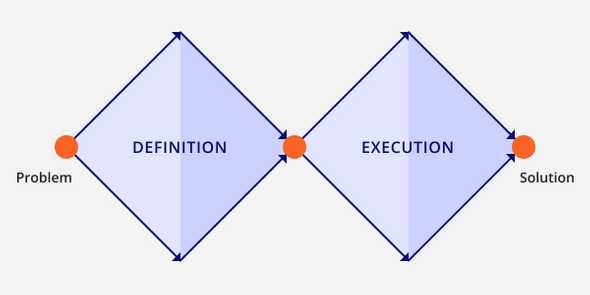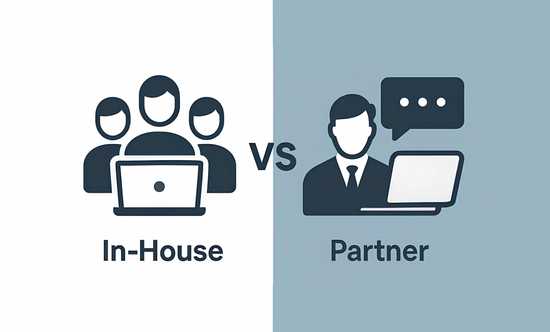Effective product discovery team - a recipe for success
When it comes to product or feature development, teams all too often jump straight to searching for a solution without a proper problem definition. It feels natural, especially when the customer already has a list of features in mind or the team has been working on the product for a while.
One can generate a billion cool ideas without breaking a sweat, but which ones are actually useful and worth spending time and resources on? Why do the users need those features? What kind of business problems will they solve, and how fast?
All these questions may and should be answered in the product or feature development initiation phase, and boy, do wrong answers (or lack of any) cost too much.
Through trials and errors, we have come up with a recipe for finding and implementing the best ideas while staying on track. Here’s our piece of advice.
Facilitate cross-functional collaboration
It is necessary to combine all the required perspectives and skills to analyze and choose the best options, which means that the most effective product team should consist of people with different roles.
In the early stage, the key roles that can lead the proper discussion are:
- data-driven analyst,
- UX and user-oriented experts, like a user researcher and a designer,
- technical representative, e.g. architect or developers,
- and product or project manager as a facilitator, driver, and mediator between all the teams around.
The final team setup is highly dependent on the feature or project details. Still, it is undoubtedly worth involving salespeople or other customer-facing teams in some cases or making them the core discovery team part. Such a combination of the right people can thoroughly and effectively identify the ideal solution for the most critical problem.
Listen to other team members to avoid mistakes
A collaborative environment is one of the main ingredients that enable agile teams to bypass cognitive pitfalls and prejudices and quickly find objectively successful solutions. But it may be hard to establish.
Even with a comprehensive team, finding consensus fast is a tricky task. The more people are involved, the easier it is to waste time and get bogged down in useless discussions. To avoid that, the team should sustain both their discipline and relationship.
Having some basic principles and rules agreed upon by all the team members would significantly increase the effectiveness of collaboration, so don’t be afraid to set up some boundaries to help your team reach the best conclusions faster.
A leader’s misconceptions is another obstacle that often prevents a team with a rigid hierarchy from reaching an informed decision. That is why it is so important to foster an atmosphere of trustful and respectful communication where every team member can share any opinion or idea and challenge the others. Optimally, a team should have no head leading the others, but many experienced people looking at the problems from very different perspectives. Such a work dynamic is paramount to success.
If team members enjoy a collaborative atmosphere, follow set principles and standards, and are passionate about the customers and their concerns, they will self-organize and focus on the right things.
Make data-driven decisions
Another key element of effective decision making is flexible thinking supported by actual data that may easily prove or dispel any hypothesis regardless of its author’s assurance.
Data is everywhere, so why ignore it during the decision making process? As the team integrates it into their operations and techniques, they open a route for driving the discussion by objective facts instead of subjective opinions.
In other words, analysis of metrics and statistics as a mandatory step of a product discovery process increases the likelihood of success of the future product as it gives a way to validate ideas.
Toss in a couple of diamonds
Now that your team is all prepped up, it is time to spice it up with the double diamond, one of the most beautiful techniques used by many teams worldwide. It is nothing new but a straightforward and easily adaptable method of well-proven effectiveness used to solve issues on the product development journey.
Following the main idea of this approach, the team has to start with divergent thinking and then switch to the convergent phase to narrow down to the best-suited ideas. Often, the result is very different from the initial solution idea.
The key is to pay enough attention to the problem definition phase and generate as many ideas as possible, going beyond the usual thinking. Analyzing the current user needs and issues, mapping the user journey, defining the jobs to be done - all these steps are aimed to get to the deepest level of understanding of the existing problem.
Such an approach may be applied to many different processes, so some teams end up with adaptations like a triple diamond, etc., that cover more details of the product and feature development process.
It may sound easy, but in reality, it is hard to keep the team thinking about the problem only and not switch to the ‘solution mode’ too early.
When the team tries to implement this approach for the first time, it is imperative that one of its members acts as a facilitator or champion and keeps the discussion following the methodology. Otherwise, it is impossible to unleash its potential.
But once the team members manage to free up their minds and openly discuss the problem together, they will never be the same. They won’t forget that amazing feeling of deep understanding of the customer’s actual problem and finding a spot-on solution.
So, what does it take for a team to succeed in the fast-changing world of endless opportunities and challenges?
You need a team of highly professional and customer-oriented people ready to listen to each other, learn and apply some new knowledge, and be able to admit mistakes to find a better solution. That is our recipe for success.






